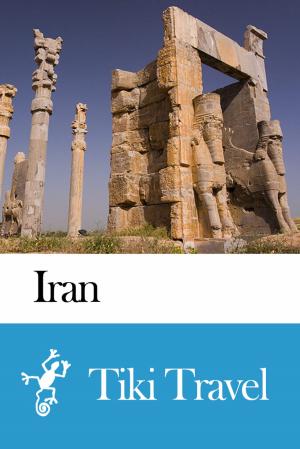The Assassins of Alamut
Nonfiction, Religion & Spirituality, Middle East Religions, Islam, History, Middle East| Author: | Anthony Campbell | ISBN: | 9781452384795 |
| Publisher: | Anthony Campbell | Publication: | October 31, 2009 |
| Imprint: | Smashwords Edition | Language: | English |
| Author: | Anthony Campbell |
| ISBN: | 9781452384795 |
| Publisher: | Anthony Campbell |
| Publication: | October 31, 2009 |
| Imprint: | Smashwords Edition |
| Language: | English |
The book begins by describing a visit to the main Assassin Castle of Alamut, in northern Iran, which I made in 1966. Next comes an explanation of how the Assassins arose as a sect within the Ismailis, who were themselves a sect within the Shia. The Ismailis founded Cairo, which was the centre of Ismailism until it was taken by Saladin in the twelfth century.
The founder of the Assassins was Hasan-i-Sabbah, and his story is told in Chapters 3 and 4. He was an austere figure, with resemblances to Osama bin Laden. After his death the Assassins continued much as before for a time, but in 1164 Hasan II, the Grand Master of Alamut, proclaimed the Great Resurrection. This was the central event in the history of the sect and its origin and implications are described in Chapter 5.
At this time the Assassins set up a branch in Syria, where they came into contact with the Crusaders. Their chief was a remarkable man called Sinan, about whom many miraculous stories are related.
Later, the Assassins declined in influence and vitality, becoming reconciled in large measure with mainstream Islam. Finally they were defeated and destroyed by the Mongols, but they had a surprising continuation in India. The Aga Khan is the lineal descendant of the Grand Masters of Alamut.
Although the book deals with the political aspects of the Assassins, its main focus is on their extraordinary ideas, based in large part on Neoplatonism seen through Iranian eyes. The Ismaili cosmic scheme has an undoubted fascination and it isn't difficult to understand how the Ismailis could become totally absorbed in its ramifications. It seems to explain everything, and its huge number of components lock together like the mechanism of an incredibly complicated apparatus, which in fact it was. But it was also, I think, a little mad. It was a gigantic web of fantasy, a perfect example of what I have described elsewhere as the Casaubon delusion. It has a strong claim to be one of the most remarkable speculative systems ever devised.
The book begins by describing a visit to the main Assassin Castle of Alamut, in northern Iran, which I made in 1966. Next comes an explanation of how the Assassins arose as a sect within the Ismailis, who were themselves a sect within the Shia. The Ismailis founded Cairo, which was the centre of Ismailism until it was taken by Saladin in the twelfth century.
The founder of the Assassins was Hasan-i-Sabbah, and his story is told in Chapters 3 and 4. He was an austere figure, with resemblances to Osama bin Laden. After his death the Assassins continued much as before for a time, but in 1164 Hasan II, the Grand Master of Alamut, proclaimed the Great Resurrection. This was the central event in the history of the sect and its origin and implications are described in Chapter 5.
At this time the Assassins set up a branch in Syria, where they came into contact with the Crusaders. Their chief was a remarkable man called Sinan, about whom many miraculous stories are related.
Later, the Assassins declined in influence and vitality, becoming reconciled in large measure with mainstream Islam. Finally they were defeated and destroyed by the Mongols, but they had a surprising continuation in India. The Aga Khan is the lineal descendant of the Grand Masters of Alamut.
Although the book deals with the political aspects of the Assassins, its main focus is on their extraordinary ideas, based in large part on Neoplatonism seen through Iranian eyes. The Ismaili cosmic scheme has an undoubted fascination and it isn't difficult to understand how the Ismailis could become totally absorbed in its ramifications. It seems to explain everything, and its huge number of components lock together like the mechanism of an incredibly complicated apparatus, which in fact it was. But it was also, I think, a little mad. It was a gigantic web of fantasy, a perfect example of what I have described elsewhere as the Casaubon delusion. It has a strong claim to be one of the most remarkable speculative systems ever devised.















